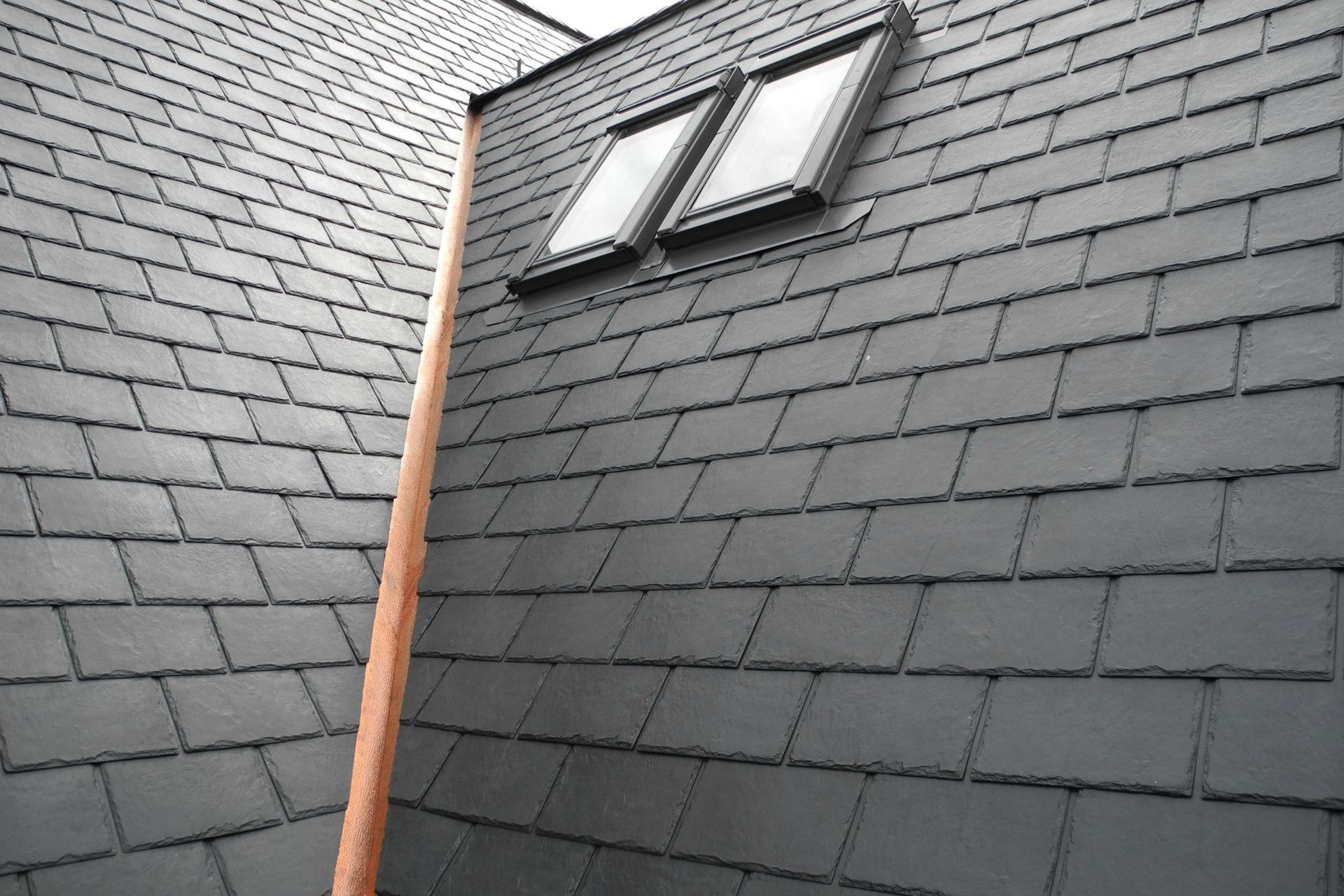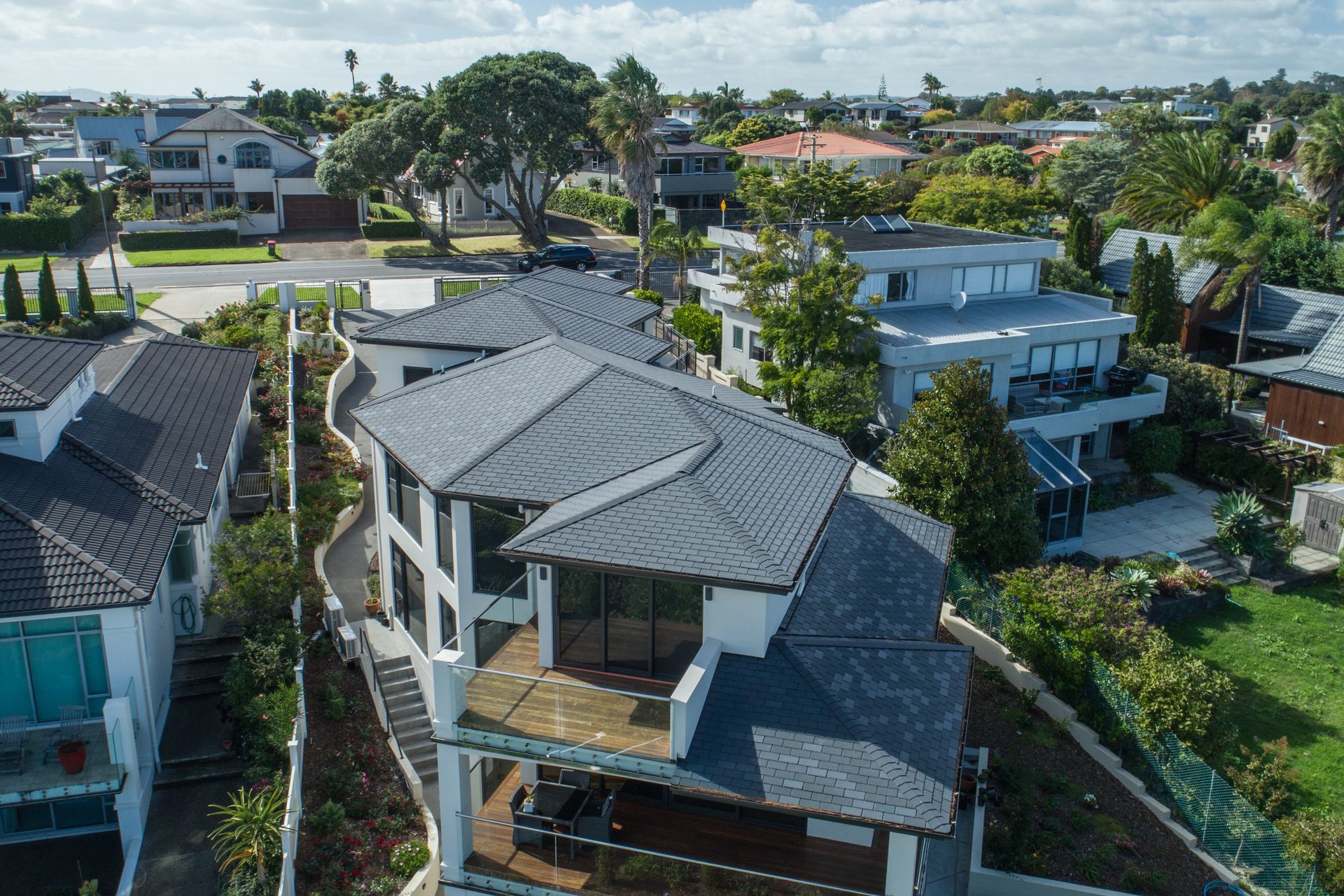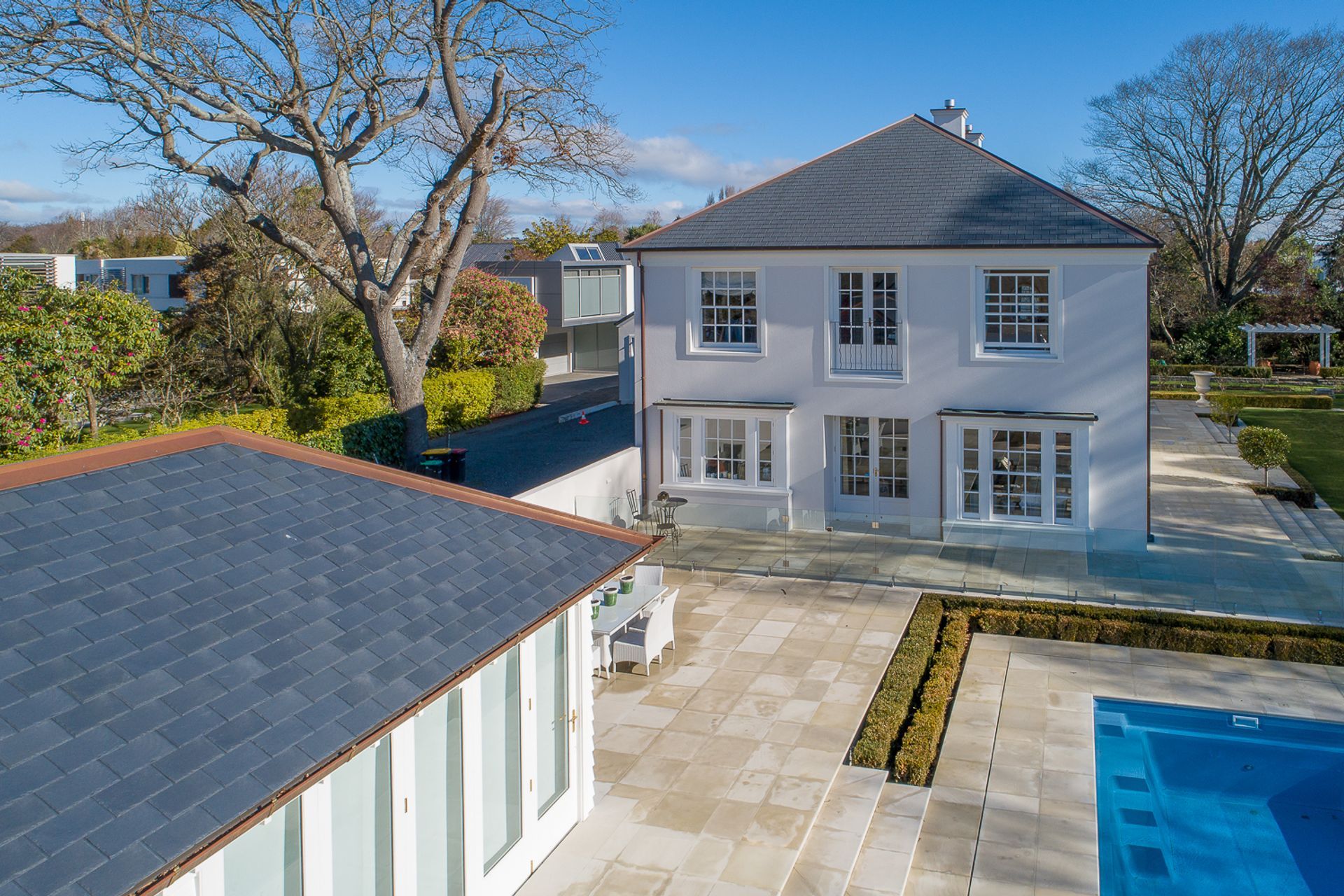A sustainable alternative to slate roofing that doesn’t compromise aesthetics
Written by
03 April 2023
•
3 min read

Previously only used for castles and military structures due to its high price point, the first private home with a slate roof is said to have been built around 1300 AD in North Wales. In the 1600s, slate roofing appeared in North America, and in the 1800s Spain started quarrying the stone. Growing in popularity in the second half of the nineteenth century, slate roofing remains a common choice for high-end homes today.
In spite of its pros — durability, fire-resistance, aesthetic appeal — slate roofing is expensive and heavy, putting undue strain on the building structure, and those who transport and install it.
Responding to the cons, an alternative to slate roofing began development in the 1970s, when the Staroba family created the first iteration of the recycled rubber and plastic formula now used to create EcoStar injection-moulded synthetic slate tiles. In 1996, the first synthetic slate tiles were sold, and now, over 20 years later, EcoStar distributes their light-weight, sustainable alternative to slate roof tiles all over the world — with Viking Roofspec supplying the product in New Zealand.


The EcoStar formula is designed to look like slate, but is made from up to 80% post-industrial recycled materials — and is easily recyclable at the end of its life, too. While the material itself is diverting waste from landfill, Viking Roofspec Pitched Roofing and Technical Specialist Zane Carpenter, says EcoStar’s lightweight nature is another sustainable benefit.
“Slate is quarried, and requires big trucks to transport it at every stage of its life cycle. EcoStar tiles are less than half the weight, which makes them more economical.”
Aside from the environmental benefits of using a lightweight material, Carpenter says this feature also comes in handy for heritage building restoration.
“EcoStar tiles are installed on a timber sarking substrate, like asphalt shingles. This braces the building structure by creating one robust diaphragm. So, in the event of an earthquake, building inhabitants and passers-by will be safe from dangerous projectiles in the form of individual tiles having shaken loose while having the protection of a building completely braced by a timber-sarked substrate.
“The combined weight of an EcoStar roof installed on a timber-sarked roof is still approximately half the weight of a slate, concrete, or clay tile roof, which reduces the weight on the old timber, old framing, and old foundations.”
Reducing the strain on these older building materials helps to preserve history by extending their lifetime.


A key drawcard for slate tiles is their stately appearance. From the classic deep grey to a mossy green, the EcoStar range has a series of colours that emulate the timelessness of period architecture.
Injection-moulded to imitate the chiselled look of cut stone, the EcoStar tiles are a brilliantly accurate rendition. Each profile is manufactured with over 50 separate moulds to emulate the beautiful imperfection of natural, hand-chiselled slate.
“We’re currently involved in the restoration of a church roof in Timaru, and the original slate roof had two colours, a dark grey and rows of green. We’ve used a green EcoStar tile and a charcoal one, so there are separate rows of charcoal and green, to mimic the original pattern,” Carpenter says. “The only real limit is your imagination.”

Viking EcoStar is backed by a 50-year product warranty and can only be installed by Viking Approved Applicators.
Learn more about Viking Roofspec and the Viking EcoStar roof tiles.